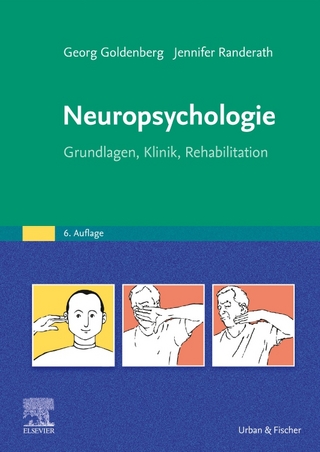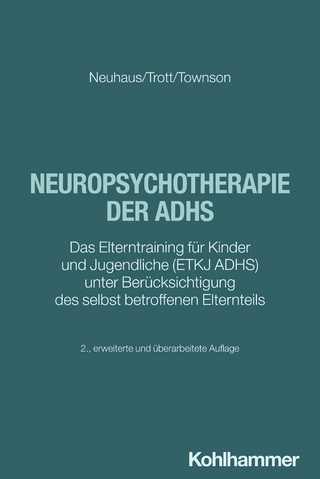
Neuroscience of Alcohol
Academic Press Inc (Verlag)
978-0-12-813125-1 (ISBN)
Alcohol is one of the world’s most common addictive substances, with about two billion individuals worldwide consuming it in one form or another and three million annual deaths that are associated with alcohol misuse. Alcohol alters a variety of neurological processes, from molecular biology, to cognition. Moreover, addiction to alcohol can lead to numerous other health concerns and damage virtually every organ system in the body, making diagnosis and treatment of individuals addicted to alcohol of critical importance.
Victor R. Preedy BSc, PhD, DSc, FRSB, FRSPH, FRSC, FRCPath graduated with an Honours Degree in Biology and Physiology with Pharmacology. After gaining his University of London PhD, he received his Membership of the Royal College of Pathologists. He was later awarded his second doctorate (DSc), for his contribution to protein metabolism in health and disease. He is Professor of Clinical Biochemistry (Hon) at King’s College Hospital and Emeritus Professor of Nutritional Biochemistry at King’s College London. He has Honorary Professorships at the University of Hull, and the University of Suffolk. Professor Preedy was the Founding Director and then long-term Director of the Genomics Centre at King’s College London from 2006 to 2020. Professor Preedy has been awarded fellowships of the Royal Society of Biology, the Royal College of Pathologists, the Royal Society for the Promotion of Health, the Royal Institute of Public Health, the Royal Society for Public Health, the Royal Society of Chemistry and the Royal Society of Medicine. He carried out research when attached to the National Heart Hospital (part of Imperial College London), The School of Pharmacy (now part of University College London) and the MRC Centre at Northwick Park Hospital. He has collaborated with international research groups in Finland, Japan, Australia, USA, and Germany. To his credit, Professor Preedy has published over 750 articles, which includes peer-reviewed manuscripts based on original research, abstracts and symposium presentations, reviews and edited books.
PART I: INTRODUCTORY CHAPTERS
1. Becoming a "Successful" Drinker and a Graduate: A Sociological Perspective on Alcohol Consumption by University Students
2. Molecular Genetics Meets Sociology: Birth Cohort Effects on Alcohol Use and Relationship With Candidate Genes
3. Alcohol and Women: Unique Risks, Effects, and Implications for Clinical Practice
4. ADH and ALDH Polymorphisms in Alcoholism and Alcohol Misuse/Dependence
5. Acetaldehyde in the Brain After Ethanol Exposure: Research Progress and Challenges
6. Consequences of Ethanol Exposure on Neurodevelopment
7. Animal Models of Binge Drinking: Behavior and Clinical Relevance
PART II: NEUROBIOLOGY
8. Prenatal Alcohol Exposure: Developmental Abnormalities in the Brain
9. Connecting Prenatal Alcohol, Its Metabolite Acetaldehyde, and the Fetal Brain
10. Fetal Alcohol Exposure and the Central Nervous Control of Breathing
11. Synaptic Plasticity in the Hippocampus and Alcohol Exposure During Brain Development
12. Ethanol and Cortical Spreading Depression: The Protective Role of α-Tocopherol
13. Brain Electrophysiological Signatures in Human Alcoholism and Risk
14. Alcohol and Hippocampal Epileptiform Activity
15. Effects of Alcohol on the Corpus Callosum
16. The Role of the Lateral Habenula Circuitries in Alcohol Use Disorders
17. Ventral Pallidum and Alcohol Addiction
18. The Hyperpolarization-Activated Cyclic Nucleotide-Gated Ion Channels in the Rewarding Effects of Ethanol
19. Neuroimmune Aspects of Alcoholism and Affective Comorbidity
20. Social Drinking and Motor Inhibition: Evidences From FMRI Go/Nogo Tasks fMRI Studies on Alcohol Effect on Inhibition
21. Myelopathy and Neuropathy Associated With Alcoholism
22. Alcohol Consumption and the Risk of Amyotrophic Lateral Sclerosis
23. Alcohol and Pain Interactions
24. Neurobiological Aspects of Ethanol-Derived Salsolinol
25. Brain Networks in Active Alcoholism and Enduring Recovery: Functional Magnetic Resonance Imaging, Electrophysiological Studies, and Implications for Targeted Treatments
26. Central Role of Amygdala and Hypothalamus Neural Circuits in Alcohol Withdrawal Symptom
PART III: PSYCHOLOGY, BEHAVIOR, AND ADDICTION
27. Neural Reward Processing in Human Alcoholism and Risk: A Focus on Event-Related Potentials, Oscillations, and Neuroimaging
28. Occipito-Temporal Sensitivity and Emotional Faces in Alcohol Use Disorder
29. Alcohol and Violence in Psychopathy and Antisocial Personality Disorder: Neural Mechanisms
30. Language Lateralization in Fetal Alcohol Spectrum Disorders
31. Deprivation in Rewards and Alcohol Misuse
32. Alcohol (Mis)Use in Individuals With Mild to Borderline Intellectual Disability
33. Sex, Stress, and Neuropeptides Interact to Influence Alcohol Consumption
34. Maternal Separation Stress in Fetal Alcohol Spectrum Disorders: A Case of Double Whammy
35. Impulsivity and Binge Drinking: A Neurocognitive Perspective
36. Acetaldehyde and Motivation
37. Age-Related Differences in the Appetitive and Aversive Motivational Effects of Alcohol
38. Alcoholism in Bipolar Disorders: An Overview of Epidemiology, Common Pathogenetic Pathways, Course of Disease, and Implications for Treatment
39. Socio-Emotional Deficits in Severe Alcohol Use Disorders
40. Relapse Risks in Patients With Alcohol Use Disorders
41. The Neurocognitive Effects of Alcohol Hangover: Patterns of Impairment/Nonimpairment Within the Neurocognitive Domains of the Diagnostic and Statistical Manual of Mental Disorders, 5th Edition
PART IV: PHARMACOLOGY, NEUROACTIVES, MOLECULAR, AND CELLULAR BIOLOGY
42. Neuroactive Steroids and Ethanol Exposure: Relevance to Ethanol Sensitivity and Alcohol Use Disorders Risk
43. Alcohol’s Effects on Extracellular Striatal Dopamine
44. Nicotinic Cholinergic Mechanisms in Alcohol Abuse and Dependence
45. Opioid System and Alcohol Consumption
46. The Enkephalinergic System and Ethanol Effects
47. Alcohol and Central Glutamate Activity: What Goes Up Must Come Down?
48. Ethanol and Hippocampal Gene Expression: Linking in Ethanol Metabolism, Neurodegeneration, and Resistance to Oxidative Stress
49. Stress, Alcohol, and Hippocampal Genes
50. Genes and Alcoholism: Taste, Addiction, and Metabolism
51. Ethanol Exposure During Development, and Brain Oxidative Stress
52. Alcohol-Induced Oxidative Stress in the Brain: Suggested Mechanisms, Associated Disorders, and Therapeutic Strategies
53. Lead Exposure and Ethanol Intake: Oxidative Stress as a Converging Mechanism of Action
PART V: ALCOHOL AND OTHER ADDICTIONS
54. Alcohol and Gambling Addiction
55. Neuroscience of Alcohol and Crack Cocaine Use: Metabolism, Effects and Symptomatology
56. The Impact of Ethanol Plus Caffeine Exposure on Cognitive, Emotional, and Motivational Effects Related to Social Functioning
PART VI: BIOMARKERS AND SCREENING
57. Biomarkers of Alcohol Misuse
58. Phosphatidylethanol Homologs in Blood as Biomarkers for the Time Frame and Amount of Recent Alcohol Consumption
59. Metabolomics to Differentiate Alcohol Use Disorders From Social Drinkers and Alcohol-Naive Subjects
60. Meconium Biomarkers of Prenatal Alcohol Exposure
61. Applications of the Alcohol Use Disorders Identification Test (AUDIT) in Distinct Health Areas
62. Craving Measurement and Application of the Alcohol Craving Experience Questionnaire
PART VII: TREATMENTS, STRATEGIES AND RESOURCES
63. Negative Emotions and Alcohol Use Disorder Treatment
64. Use of Baclofen in Alcohol Use Disorder: A Clinical Approach
65. Baclofen-Induced Neurotoxicity
66. Treatment With Nalmefene in Alcoholism
67. Dual Therapy for Alcohol Use Disorders: Combining Naltrexone With Other Medications
68. The Avermectin Family as Potential Therapeutic Compounds for Alcohol Use Disorder: Implications for Using P2X4 Receptor as a Drug-Screening Platform
69. Alcohol Withdrawal Syndrome: Clinical Picture and Therapeutic Options
70. Resources for the Neuroscience of Alcohol
| Erscheinungsdatum | 29.03.2019 |
|---|---|
| Verlagsort | San Diego |
| Sprache | englisch |
| Maße | 216 x 276 mm |
| Gewicht | 1950 g |
| Themenwelt | Geisteswissenschaften ► Psychologie ► Biopsychologie / Neurowissenschaften |
| Medizin / Pharmazie ► Medizinische Fachgebiete ► Suchtkrankheiten | |
| Medizin / Pharmazie ► Studium | |
| ISBN-10 | 0-12-813125-X / 012813125X |
| ISBN-13 | 978-0-12-813125-1 / 9780128131251 |
| Zustand | Neuware |
| Informationen gemäß Produktsicherheitsverordnung (GPSR) | |
| Haben Sie eine Frage zum Produkt? |
aus dem Bereich


